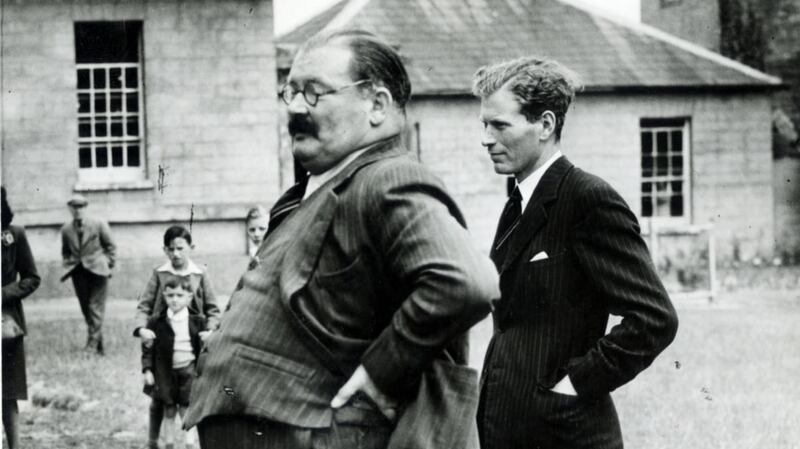The Economic War with Britain was raging. There were rumours of an autumn election. Amid fears of a coup, Eoin O’Duffy’s Blueshirts had recently called off a march on Leinster House, instead channelling their energies into a new party, to be named Fine Gael.
Dark clouds were gathering in mainland Europe too, although the big story was Adolf Hitler turning the first sod on the project that would become the autobahns.
Ireland's middle classes, meanwhile, struggled on as best they could. The lead item in The Irish Times women's page was about the difficulty of finding good "servants". It needn't be a problem, advised the writer; you could still find "treasures" just by asking the right questions at interview.

It was against this turbulent backdrop that Bertie Smyllie, still a mere Irishman’s Diarist with the paper then, but soon to become one of its greatest editors (hint, hint), took out a Post Office savings certificate to the value of 15 shillings and sixpence.
He bought two more before the end of September 1933, and another couple in 1934, for a total investment of over £3.
But by then, he had had greatness thrust upon him, as the man who would hire Myles na gCopaleen, give Patrick Kavanagh occasional work, oversee the Times's difficult transition from writing "Kingstown Harbour" to "Dún Laoghaire", and in general plunge the old ascendancy paper into the life of the new independent Ireland in which, reluctantly, it found itself.
Perhaps, with such responsibilities, Smyllie forgot about the Post Office savings. In any case, there were no further additions to, or withdrawals from, the account in his lifetime. The money just continued to grow – albeit, apparently, not as fast as he did.
Another former Irishman's Diarist, Patrick Campbell, recalled in his memoirs that when they first met, Smyllie "must have weighed 18 stone". But in an 1950s article for the Spectator, his estimate had increased by more than 25 per cent. And whether this was physically correct, Smyllie certainly grew to become a larger-than-life figure, as Campbell's intro – written from exile in London's Fleet Street – suggests: "When, in these trying times, it's possible to work on the lower slopes of a national newspaper for several weeks without discovering which of the scurrying executives is the editor, I count myself fortunate to have served under one who wore a green sombrero, weighed twenty-two stone, sang parts of his leading articles in operatic recitative, and grew the nail on his little finger into the shape of a pen nib, like Keats."
Campbell also implied, inter alia, that Smyllie was a meticulous record keeper, if only in that always he kept a naggin of brandy in his filing cabinet, “under B”. So perhaps the man in the sombrero never forgot about his nest egg in the Post Office. Maybe the knowledge that it was there sustained him through the late 1930s, the Emergency, and the postwar years.
But if the savings certs were still a long way off maturing then, alas, this could not be said for him.
He died in 1954, much lamented, leaving the savings account to carry on alone.
It did so throughout the Lemass years, the 1973 oil crisis, the grim 1980s, and the early Celtic Tiger era. In fact, only in 2001, 68 years after he’d invested in it, did the first savings cert mature. The last followed a year later, since when the total amount – now a splendid €125.95 – has remained untouched.
We know all this because of a family named the McDonnells, who early this century moved into a house in Dublin’s Pembroke Park, where every August since a statement has arrived from An Post to remind a “Mr Robert Smyllie” of his savings.
“It was a great source of fascination to the children,” says John McDonnell. And having worked out who the phantom saver was, the family were then delighted to discover that Smyllie had a room devoted to him in the Little Museum of Dublin, featuring among other things his desk and the typewriter he used to sling from his handlebars while cycling around the city.
The McDonnells could, if so minded, contribute another of his personal artefacts – a vintage, cast-iron bath. On the other hand, it doesn’t sound like it would fit in a Little Museum. “It’s enormous,” says John. So instead they’re donating his latest annual statement to the collection. If there are Smyllie next-of-kin somewhere, meanwhile, they have €126 to claim. Failing that, I suggest the money should go to a suitable charity, such as the Sick & Indigent Irishman’s Diarist Society.
@FrankmcnallyIT












